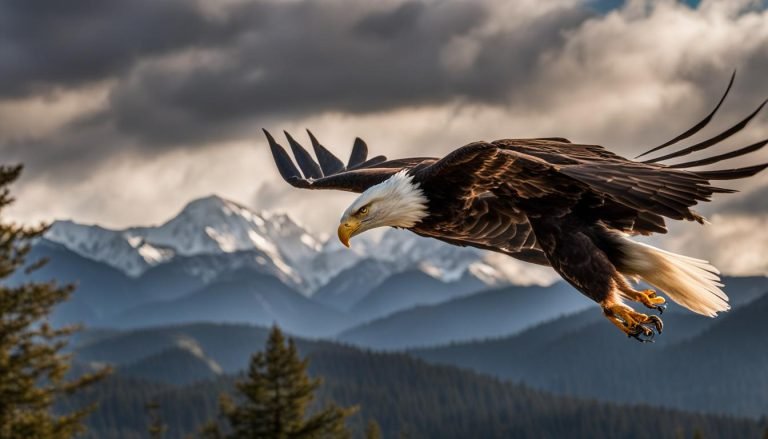Bird
Birds are a diverse group of animals that belong to the class Aves. They are characterized by their feathers, beaks, and the ability to fly. With over 10,000 different species, birds have evolved to occupy various ecological niches.
The evolution of birds can be traced back to theropod dinosaurs, with Archaeopteryx being one of the earliest known bird-like creatures. Birds have adapted to different environments and have developed unique characteristics to thrive in their habitats.
They play a crucial role in ecosystems and have been classified into different orders based on their physical and behavioral traits.
Size
Birds come in a wide range of sizes, with the largest bird species being the ostrich. Ostriches can reach heights of up to 9 feet and weigh over 300 pounds. They are known for their impressive size and powerful build. On the other end of the spectrum, the smallest bird species is the bee hummingbird. Measuring only around 2.25 inches in length, it is one of the tiniest birds in the world.
The size of birds varies greatly and is influenced by their evolutionary adaptations and habitats. Larger birds often rely on their size for flight or hunting, while smaller birds have adapted to maneuver through dense vegetation or extract nectar from flowers. Each size has its unique advantages and adaptations, allowing birds to thrive in their respective environments.
Habitat
Birds inhabit diverse habitats worldwide, from the icy Arctic tundra to lush rainforests and open grasslands. Different bird species have specific habitat requirements based on their diet, nesting habits, and migration patterns. Some birds are highly migratory, traveling long distances to find suitable breeding grounds or food sources. Others have adapted to urban environments and can be found nesting in cities. Birds construct nests in various locations, such as trees, cliffs, or even underground burrows. Their choice of habitat is influenced by factors such as temperature, food availability, and the presence of predators.
Behavior
Birds are known for their fascinating and diverse behaviors, which include courtship displays, territorial defense, and complex communication systems. Courtship rituals play a crucial role in attracting mates, and birds employ a variety of strategies to capture their attention. Elaborate visual displays, such as colorful plumage or intricate dances, can be observed in courtship rituals. In addition, birds use their melodious songs to serenade potential partners, showcasing their vocal talents.
Each bird species has its own unique courtship rituals, and these behaviors can vary greatly. While some birds engage in intricate aerial displays, others may construct elaborate nests or offer gifts to their potential partners. These rituals not only serve to attract mates but also help establish and strengthen pair bonds.
In addition to courtship displays, communication is crucial among birds, both within their species and across different species. Birds use a variety of vocalizations, visual signals, and even dance-like movements to convey messages and establish hierarchies within their social groups. Vocalizations can range from melodic songs to alarm calls and territorial calls, all serving different purposes.
Furthermore, birds have developed complex communication systems that allow them to convey information to one another. These communication systems help coordinate group behaviors, warn of danger, and establish territories. For example, certain calls may signal the presence of predators, prompting other birds to take evasive action.
Overall, bird behavior is a fascinating and intricate subject, with courtship rituals and communication playing vital roles in the social dynamics and survival of bird species. Understanding these behaviors not only provides insights into bird biology but also enhances our appreciation for the incredible diversity and complexity of the avian world.
Hunting
Birds employ various hunting techniques depending on their feeding habits and prey. Birds of prey, such as eagles, hawks, and owls, have keen eyesight, powerful talons, and sharp beaks to capture and kill their prey. They often rely on their exceptional flying skills to pursue and catch their targets. Other bird species have specialized beaks and bills for specific feeding habits, such as probing flowers for nectar or sieving water for small organisms. Some birds even engage in cooperative hunting, working together to catch larger prey or drive prey into trap-like formations.
Mortality
Birds face various threats and mortality factors. Predation, disease, and habitat loss are significant contributors to bird mortality. Human activities, such as habitat destruction, pollution, and climate change, have led to population declines in many bird species.
Conservation efforts play a vital role in protecting bird populations and their habitats. Organizations and individuals work to preserve and restore habitats, reduce pollution, mitigate the impacts of climate change, and promote awareness about the importance of birds in ecosystems.
Efforts are also made to reduce bird mortality caused by factors like window collisions, collisions with vehicles, and predation by domestic cats.
Source: Audubon Society, Cornell Lab of Ornithology, National Geographic
Location
Birds have a remarkable global presence, inhabiting nearly every corner of the world. However, the distribution of bird species varies across continents, islands, and ecosystems, leading to unique bird communities in each region. Some areas are known as hotspots of avian diversity, exhibiting a rich array of bird species.
For instance, tropical rainforests teem with colorful and diverse bird species. These lush habitats provide abundant food and shelter, supporting a wide range of avian life. In contrast, Arctic regions host hardy migratory species that have adapted to survive in harsh conditions, such as long and frigid winters.
The diversity and abundance of bird species in a particular area are influenced by several factors. Climate plays a crucial role, with birds favoring regions that provide suitable temperatures and precipitation levels. Food availability is also a key factor, as different species have specific dietary requirements. Furthermore, the presence of predators can shape bird populations, as some areas may offer more protection from predators than others.







